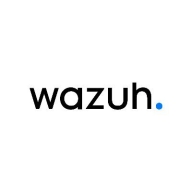

Dynatrace and Wazuh are prominent in the monitoring software category, focusing on application performance management and security monitoring, respectively. Dynatrace has a competitive edge in application performance management, while Wazuh offers appealing open-source solutions.
Features: Dynatrace provides granular transaction analysis for performance troubleshooting, advanced user experience monitoring, and the innovative PurePath technology, which allow businesses to quickly detect and resolve performance issues. Wazuh offers robust security monitoring, strong log analysis, compliance management, and essential features for vulnerability detection and file integrity monitoring. It stands out as a flexible, open-source option for security-centric requirements.
Room for Improvement: Dynatrace users see areas for improvement in its complexity, dashboard simplification, and alert configurations, along with integration with external tools and broader environment support. Wazuh could improve scalability, enhance real-time monitoring for Unix, and benefit from better threat intelligence integration, with more user-friendly interfaces and alert customization options.
Ease of Deployment and Customer Service: Dynatrace offers a streamlined onboarding experience with an intuitive setup process, comprehensive resources like Dynatrace University, and active customer support. Wazuh, being open-source, provides deployment flexibility but lacks the structured support system of Dynatrace, requiring users to rely more on community-driven support.
Pricing and ROI: Dynatrace is considered a premium solution with higher ROI through enhanced operational efficiency, despite its higher price point linked to expansive capabilities. Conversely, Wazuh offers significant cost benefits as an open-source tool, appealing to cost-conscious users focused on security without the financial burden typical of enterprise solutions.
Using Dynatrace directly improved application uptime and reduced customer impacting incidents.
ROI is hard to specify; however, incidents like impending ransomware attacks highlight its value, though those are exceptional events.
I have seen value in security cost savings with Wazuh, as using proprietary EDR versions could save us substantial money.
They have a good reputation, and the support is commendable.
The technical support from Dynatrace is excellent.
Whenever we faced any issues, we could get timely resolution from their support.
They responded quickly, which was crucial as I was on a time constraint.
We use the open-source version of Wazuh, which does not provide paid support.
The documentation is good and provides clear instructions, though it's targeted at those with technical backgrounds.
If it's an enterprise, increasing the number of instances doesn’t pose problems.
It is a powerful tool and helped us to reduce customer downtime and increase work efficiency.
It can accommodate thousands of endpoints on one instance, and multiple instances can run for different clients.
Currently, I don't see any limitations in terms of scalability as Wazuh can still connect many endpoints.
Scalability depends on the configuration and the infrastructure resources like compute and memory we allocate.
Generally, all are stable at ninety-nine point nine nine percent, but if the underlying infrastructure is not deployed correctly, stability may be problematic.
There have been no stability issues with Dynatrace.
The stability of Wazuh is strong, with no issues stemming from the solution itself.
The stability of Wazuh is largely dependent on maintenance.
The indexer frequently times out, requiring system restarts.
The definition of enterprise is loosely used, however, from a holistic security perspective, including infrastructure, network, ports, software, applications, transactions, and databases, there are areas lacking, especially in network monitoring tools.
I'm specifically looking at AIOps and how we can monitor AIOps-related things, considering we have LLMs and all that stuff.
They have been the pioneers from inception, and they remain at the top of the Gartner chart.
Machine learning is needed along with understanding user behavior and behavioral patterns.
The integration modules are insufficiently developed, necessitating the creation of custom integration solutions using tools like Logstash and PubSub.
I think Wazuh should improve by introducing AI functionalities, as it would be beneficial to see AI incorporated in the threat hunting and detection functionalities.
Dynatrace is known to be costly, which delayed its integration into our system.
If setting up in a large scale environment, it is overwhelming because it is expensive.
If I would ask you to rate price from 1 to 10, where 1 is cheap and 10 is expensive, how many points would you give to it?
Wazuh is completely free of charge.
I would definitely recommend Wazuh, especially considering Fortinet's licensing model which is confusing and overpriced in my opinion.
Totaling around two lakh Indian rupees per month.
The integration with Power BI for generating detailed reports is a standout feature.
Dynatrace's AI-driven Davis engine absolutely helps identify performance issues by showing root cause analysis for us up to 200%; whatever is integrated, if it is visible, it can stitch and show.
Graduation features offered by Dynatrace provide a single view and can connect with many other monitoring systems.
Wazuh is a SIEM tool that is highly customizable and versatile.
The system allows us to monitor endpoints effectively and collect security data that can be utilized across other platforms such as SOAR.
With this open source tool, organizations can establish their own customized setup.
| Product | Market Share (%) |
|---|---|
| Wazuh | 11.4% |
| Dynatrace | 4.7% |
| Other | 83.9% |


| Company Size | Count |
|---|---|
| Small Business | 76 |
| Midsize Enterprise | 50 |
| Large Enterprise | 290 |
| Company Size | Count |
|---|---|
| Small Business | 26 |
| Midsize Enterprise | 15 |
| Large Enterprise | 8 |
Dynatrace is an AI-powered software intelligence monitoring platform that accelerates digital transformation and simplifies cloud complexities. Dynatrace is an entirely automated full-stack solution that provides data and answers about the performance of your applications and deep insight into every transaction throughout every application, including the end-user experience. By modernizing and automating enterprise cloud operations, users can deliver an optimal digital experience with higher quality software to customers faster.
Dynatrace offers an all-in-one automated artificial intelligence solution that brings together application performance, cloud and infrastructure, and digital experience monitoring. Dynatrace accelerates performance-driven results through operations, development, and business teams with a shared metrics platform. In addition, users are provided a full-stack monitoring experience with three patented technologies:
What does Dynatrace offer?
Dynatrace redefines how organizations monitor their digital ecosystems. The solution offers:
Reviews from Real Users
Dynatrace is the only solution that provides answers to organizations based on deep insight into each user, transaction, and organization's environment.
Barry P., a managing performance engineer at Medica Health Plans, writes, "With Dynatrace, we have synthetic checks and real-user monitoring of all of our websites, places where members and providers can interact with us over the web. We monitor the response times of those with Dynatrace, and it's all integrated into one place."
A consultant at a tech service company notes, "A feature that's one of the highlights of Dynatrace is the AI. The second most valuable feature is OneAgent. Between infrastructures, applications, operating systems, you can deploy with just a single agent and can practically install and forget about it."
Wazuh offers comprehensive security features like MITRE ATT&CK correlation, log monitoring, and cloud-native infrastructure. It ensures compliance and provides intrusion detection with high scalability and open-source flexibility, ideal for businesses seeking robust SIEM capabilities.
Wazuh stands out in security information and event management by providing efficient log aggregation, vulnerability scanning, and event correlation against MITRE ATT&CK. Its capability to integrate seamlessly with environments, manage compliance, and monitor files makes it suitable for cloud-native infrastructures and financial sectors. Despite its technical support needing enhancement and opportunities for improving AI integration and threat intelligence, its open-source nature and cost-effectiveness make it appealing. Users can leverage custom dashboards powered by Elasticsearch for precise data analysis, even though there is a desire for a more user-friendly interface and better enterprise solution integration. Deployment may be complex, but its features contribute significantly to fortified security postures.
What are the essential features of Wazuh?Industries like finance and cloud infrastructure heavily utilize Wazuh for its security strengths. By monitoring endpoints and ensuring compliance with frameworks, companies can improve security posture and swiftly detect anomalies. The platform's focus on event correlation and alerts for security incidents is particularly beneficial.
We monitor all Log Management reviews to prevent fraudulent reviews and keep review quality high. We do not post reviews by company employees or direct competitors. We validate each review for authenticity via cross-reference with LinkedIn, and personal follow-up with the reviewer when necessary.